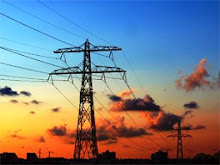Recession appears to be doing more for the environment than carbon permits or record energy prices ever did. That might be the inference from yesterday’s full-year results from Drax Group, the owner of Britain’s biggest coal-fired power station, which revealed that UK power demand fell by 6 per cent year-on-year in December, the biggest decrease in two decades.
That decline, which follows years of steady low-single-digit gains, is partly explained by straitened households moderating their consumption in response to high domestic tariffs. But the far bigger part can be pinned on a sharp fall in industrial demand from factory closures and short-time working.
That phenomenon had no effect on the numbers from Drax yesterday: revenues up 41 per cent, operating profits down 10 per cent, dividends up 13 per cent. Nor should it prove too detrimental to 2009: in common with previous years, the company has already sold forward 80 per cent of this year’s output.
But it does give pause for thought given the supply constraints that might otherwise underpin Drax’s medium-term outlook — namely, the looming generation gap from power stations being forced out of service by 2016 through compliance with
European Union emissions legislation. Drax noted that rival generators governed by the scheme were burning through their allowances faster than expected, meaning that about six gigawatts of coal-fired capacity, out of a total 11GW, could close by 2012.
Yet with falling supply partly offset by falling demand, Drax needs something more to entice.
It has been helped by currencies. It buys about half its coal in sterling but benefits from wholesale power prices that are pegged on dollar-denominated natural gas. However, forward gas prices have weakened recently and could come under increasing pressure from rising imports of liquefied natural gas. Further, power prices benefited last year from the temporary shutdown of much of Britain’s nuclear capacity — about 9GW of which is in the process of coming back on line.
Drax has a strong balance sheet, with net debt of £235 million and £800 million of historic tax losses on which it can draw. A policy of distributing all excess cash to shareholders also provides an attractive dividend yield. Yesterday’s 38.3p-a-share final payout, available until May 6, provides a 7.8 per cent return on its own.
However, Drax’s commitment to build three new biomass plants in a joint venture with Siemens means that only half of surplus funds will be returned from 2010. In the interim, the side-effects of recession could cause the pot to shrink.
At 491½p, down 12¾p, or seven times current-year earnings, there will be better times to buy.
That decline, which follows years of steady low-single-digit gains, is partly explained by straitened households moderating their consumption in response to high domestic tariffs. But the far bigger part can be pinned on a sharp fall in industrial demand from factory closures and short-time working.
That phenomenon had no effect on the numbers from Drax yesterday: revenues up 41 per cent, operating profits down 10 per cent, dividends up 13 per cent. Nor should it prove too detrimental to 2009: in common with previous years, the company has already sold forward 80 per cent of this year’s output.
But it does give pause for thought given the supply constraints that might otherwise underpin Drax’s medium-term outlook — namely, the looming generation gap from power stations being forced out of service by 2016 through compliance with
European Union emissions legislation. Drax noted that rival generators governed by the scheme were burning through their allowances faster than expected, meaning that about six gigawatts of coal-fired capacity, out of a total 11GW, could close by 2012.
Yet with falling supply partly offset by falling demand, Drax needs something more to entice.
It has been helped by currencies. It buys about half its coal in sterling but benefits from wholesale power prices that are pegged on dollar-denominated natural gas. However, forward gas prices have weakened recently and could come under increasing pressure from rising imports of liquefied natural gas. Further, power prices benefited last year from the temporary shutdown of much of Britain’s nuclear capacity — about 9GW of which is in the process of coming back on line.
Drax has a strong balance sheet, with net debt of £235 million and £800 million of historic tax losses on which it can draw. A policy of distributing all excess cash to shareholders also provides an attractive dividend yield. Yesterday’s 38.3p-a-share final payout, available until May 6, provides a 7.8 per cent return on its own.
However, Drax’s commitment to build three new biomass plants in a joint venture with Siemens means that only half of surplus funds will be returned from 2010. In the interim, the side-effects of recession could cause the pot to shrink.
At 491½p, down 12¾p, or seven times current-year earnings, there will be better times to buy.
Source: The Times



No comments:
Post a Comment